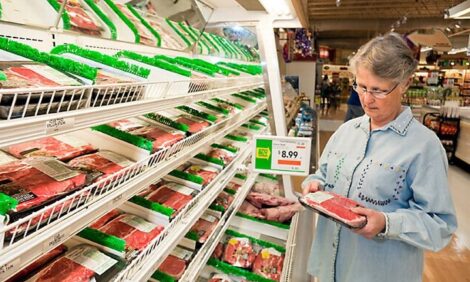



High Costs Slow Journey to Export Uganda’s Beef
UGANDA - Exorbitant cost of electricity, poor quality of cows and lack of adequate places to seclude (quarantine) sick animals from the healthy ones have made it difficult for a factory commissioned about three years ago to export processed, packaged and branded beef to the rest of the world, Daily Monitor has learnt.Egypt-Uganda Food Security (EUFS), a modern slaughterhouse commissioned in August 2015 by President Museveni is yet to export any value-added beef despite his remarks then that the country has come of age and as a result it is now in position to export processed and branded beef products.
Ideally, commercial operations should have hit high gear by now, but as a result of challenges, most of which are down to the government failure to come clean on its promises, the management of the modern abattoir has found it hard to immediately hit the ground running as earlier anticipated.
Unfulfilled govt promise
Daily Monitor understands that so far the promise by the government to offer the factory electricity at the concessional rate hasn’t been honoured yet.
The factory is being charged the industrial rate of Shs592.5, according to the Umeme 2018 tariff card. This has been worsened by routine power outages the factory is experiencing.
Although Uganda has more than 17 million heads of cattle, according to Uganda Bureau of Statistics, industry players say substantial number of that is below the classification required at the international markets.
The chief executive officer, at EUFS, Mr Sherif El Kallini, said the low weight of the local animals is below the classification demanded of cows meant for export market, which means they need to be fattened.
Thus far the government move to have the animals fattened before being slaughtered, processed, packaged and branded for export has not materialised as the fattening centre that was supposed to be built by ministry of Agriculture and Animal Industry is not yet in place.
Efforts to have the Egyptian investor bring in experts from elsewhere to train the locals on how to fatten and take care of the animals meant for export among other expertise is also being frustrated by immigration officers whom he said are demanding about $3,000 per expert, describing that as excessive.
When the Immigration Department was contracted, it emerged that the fee should not exceed $2,500 per expert.
There is also lack of a holding pen to quarantine the animals for at least 21 days to ensure they are disease free. This is an international export requirement. Without this, Ugandan beef will not be accepted in the international markets in the Middle East and beyond.
At the moment, EUFS is engaged in training of its employees on standards and professional handling of beef product for both export and domestic destination.
As far as Mr Kallini is concerned, EUFS, which came into existence following an arrangement between the government of Uganda and Egypt, is ready to fulfill its part of the bargain.
The ball is now in the court of the government. Although this newspaper has learnt that President Museveni is now involved in the matter, promising to deal with issues EUFS is grappling with, including laborious government bureaucracies.
Readying for export
Nonetheless, if everything goes according to the plan, in the next 60-days, the country’s long-awaited journey to exporting processed, packaged and branded beef should kick off.
It is estimated that about $50 million (about Shs183 billion) will be accrued annually once the EUFS factory starts exporting value-added beef products.
According to EUFS business model, more than 90 per cent of the proceeds gotten from export of the processed beef products will be reinvested into the value chain, with the livestock farmers who are estimated in the range 400 being notable beneficiaries.
Speaking in an interview last week at the facility located near Bombo Town, Luwero District, Mr Kallini said the three-year wait has been hard and long but hopes in the next two months it could come to an end.
“Before Ramadhan (Muslim fasting period) begins, we want to have begun exporting,” he said.
April is one month before the month of Ramadhan begins. This will be timely, considering that targeted export markets such as Egypt, Saudi Arabia and UAE’s demand for meat significantly increases during the fasting period.
The facility has capacity to butcher not less than 400 animals in one single shift. It also has space to hold up to nearly 5,000 animals waiting to be slaughtered.
With top range coolers, skinning equipment and a processing facilities, EUFS is one of the most modern slaughterhouse in the region.
Denial about allegations of non-payment
Meanwhile, while showing receipts of various payments he has made to several suppliers, he denied any claim that EUFS is not honouring its obligations with the individuals and companies they are doing business with.
He said anybody with a genuine claim against the factory has been paid, including the land where it is currently located.
TheCattleSite News Desk


